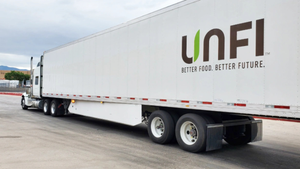Study Tallies Food Waste Diversion Efforts
WASHINGTON — Food manufacturing companies generate more food waste than food retailers, but also divert a higher percentage of it to other uses, according to a new study.
June 24, 2013
WASHINGTON — Food manufacturing companies generate more food waste than food retailers, but also divert a higher percentage of it to other uses, according to a new study.
The report, the BSR Analysis of Food Waste Among Food Manufacturers, Retailers & Wholesalers, conducted by consulting firm BSR, estimated that in 2011, manufacturers generated 44.3 billion pounds of food waste, and diverted 94.6% of it from landfills to “higher” uses, such as donations and recycling. Retailers, meanwhile, generated an estimated 3.8 billion pounds of food waste, but diverted only 55.6% to higher uses.
Follow @SN_News for updates throughout the day.
In total an estimated 4.1 billion points of food waste was disposed of in landfills or incinerators in 2011, or 8.5% of the food waste generated. Nearly three-quarters (73%) of food diverted from manufacturers went to animal feed, while food donation and composting were the most common diversion destination for food waste at the retailer and wholesaler level.
The report was commissioned by the Food Waste Reduction Alliance, which is led by Grocery Manufacturers Association, Food Marketing Institute and National Restaurant Association. It concluded that companies have opportunities to continue to reduce the amount of food waste they generate and to identify options for directing it to higher uses.
Read more: Industry Coalition Joins USDA Food Waste Challenge
“The findings uncovered by BSR are encouraging, but it’s clear we can and must do better when it comes to reducing food waste,” said Michael Hewett, director of environmental and sustainability programs, Publix Super Markets, and co-chair of the FWRA. “It’s important to find more ways to keep food and food waste out of landfills, identify the challenges that prevent us from doing so, and develop responsible policies to assist in these efforts.”
Susan Kujava, industry relations director at General Mills and co-chair of the FWRA, said, “The primary objective of the Food Waste Reduction Alliance is to reduce the volume of food waste sent to landfill by addressing the root causes of waste, and securing pathways to donate safe food or recycle it for use elsewhere. This new data not only helps us better understand how industry currently is managing food waste, it gives us a benchmark against which we can measure our progress."
You May Also Like






